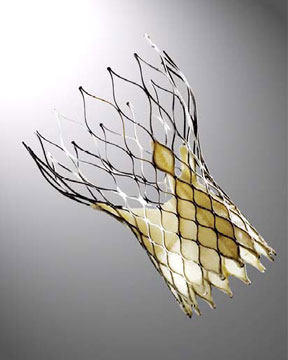“CoreValve Treatment For Aortic Regurgitation? Bicuspid Aortic Valves?” Asks Jim and Mark
By Adam Pick on September 11, 2010
Within minutes of posting “CoreValve Technology Get E.U. Approval”, I received two excellent questions from Jim and Mark. Their questions were, “Can the CoreValve system treat aortic regurgitation?” and “Can the CoreValve technology replace my bicuspid aortic valve?”

To provide Jim, Mark and everybody else a thoughtful response, I contacted Dr. Eric Roselli, MD, a heart surgeon from The Cleveland Clinic, and Dr. Allan Stewart, a heart surgeon from Miami. Here are their responses:

No, and this is a very important issue. The transcatheter aortic valves which currently include the Corevalve from Medtronic and the Sapien valve from Edwards Lifesciences are only indicated for severe aortic stenosis in very high risk patients. Their use in lower risk patients has not been validated. Both devices are only available outside the United States but the Edwards valve is under investigational use here. The CoreValve hopes to begin the US trials soon. (For disclosure reasons, it is important to mention that Cleveland Clinic has been one of the initial United States sites and I am a co-investigator. Also, I serve as a consultant to both companies and others that are working on similar technology.) Although transcatheter aortic valve replacements have been used anecdotally in purely stenotic bicuspid aortic valves, there has been a contraindication because of concerns with the different geometry in such patients. The aortic root of bicuspid patients is more elliptical than in in tricuspid aortic valve patients and that geometry of the stents may impair function and durability.
Doctor Roselli then addressed the challenges of the CoreValve with patients suffering from aortic regurgitation, also known as aortic insufficiency (AI):
Regarding the use of CoreValve patients with AI, the concern is that the device will be unstable because the fixation of the stent is dependent on the presence of a calcified and diseased valve to “hold on to”. In sheep models equivalent to patients with pure AI, nearly all of the devices embolized. More importantly for Mark to know is that most purely regurgitant bicuspid aortic valves can be durably repaired by some experienced surgeons and this can also be done through a mini incision most of the time. Thanks again for the interesting question.
In a separate conversation, Doctor Stewart echoed Dr. Roselli’s statements:

Dr. Allan Stewart, M.D.
No Adam. All transcatheter technology anchors the valve to calcium on the existing leaflets. The anatomy of bicuspid valves is different than a tri-lealfet valve. The plane of attachment prevents a radial apposition of existing devices. For patients with regurgitant bicuspid aortic valves, operative intervention will remain the only real option for the foreseeable future.
Wow… Even though the responses above were a bit technical, it’s pretty amazing to learn the science behind these new devices, right? Thanks to Jim and Mark for their questions. And, thanks to Dr. Roselli and Dr. Stewart for their thoughts!
Keep on tickin!
Adam
|
Richyne says on September 11th, 2010 at 1:32 pm |
|
I was recently at the Mayo Clinic in Rochester MN. I had a descending aortic dissection a year ago in emergency surgery. I still have an aortic valve that will eventually need to be replaced. I ask my doc if I would have to have my chest opened again to replace the valve. He said yes. I am under the impression that this valve can be replaced with a minimal incision. What is the correct answer? |
 |
|
mark says on September 14th, 2010 at 6:21 am |
|
I have had three echocardiograms to monitor my aortic regurgitation and two have revealed a tricuspid aortic valve and one has revealed a bicuspid valve. My cardiologist tells me that it dependent upion the echo technician and how they hold the instrument. What is the definitive diagnostic test to determine whether someone has a bicuspid or tricuspid valve? An MRI, CAT scan? I ask this because if I have a bicuspid valve then it may be repairable. If it is repairable then how long do I wait to do the repair? Soon after discovery of regurgitation or sometime later? |
 |












